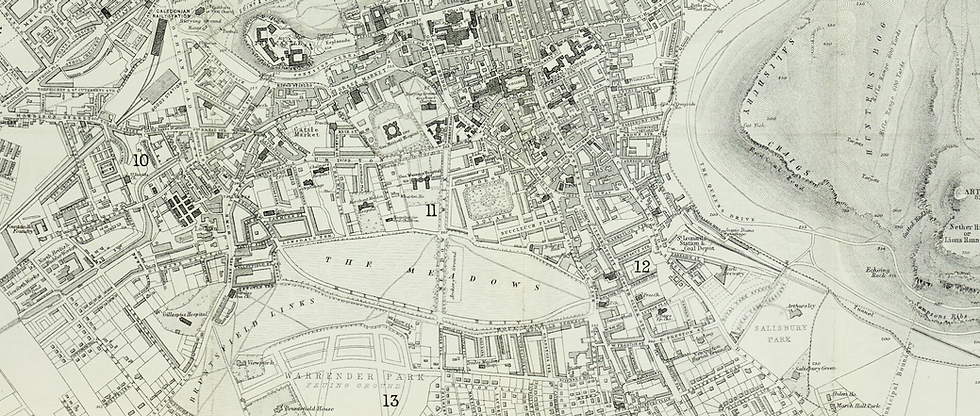Other pioneers at home in the UK and across the Atlantic
- theedinburghsevenproject
- Mar 4, 2019
- 3 min read
Updated: Mar 6, 2019
In this blog post, find out more about women who broke barriers in the US, UK and Europe and who also served as mentors and inspirations for the Edinburgh Seven.

Elizabeth Blackwell was a pioneer for women’s education and rights both in her birth country of the UK and in the USA where she lived from the age of 11. She was admitted to the Medical Institution of Geneva College, New York, in 1847, following a unanimous vote by the 150 male students. It is thought that the students were either pulling a joke on the faculty or thought that the vote was a prank. Elizabeth graduated two years later, at the top of her class. In 1857 she founded a dispensary in New York City with her younger sister Emily and Marie Zakrzewska, a Polish doctor whom Blackwell had been mentoring for a number of years.

Emily Blackwell had received her medical degree in 1854 from the Medical College of Cleveland, Ohio and managed the dispensary, which grew in time to become the New York Infirmary for Indigent Women and Children, for forty years. During the American Civil War the Blackwell sisters helped with nursing and also helped organise the Women’s Central Association of Relief. In 1868, they established the Women’s Medical College in New York City where Emily became a professor of obstetrics. Elizabeth moved to the UK where she registered with the General Medical Council in 1859, becoming the first woman to do so and in 1874 set up the London School of Medicine for Women with Sophia Jex-Blake, Elizabeth Garrett Anderson and her sister Emily. From 1880 onwards, Elizabeth campaigned with many different reform movements including moral reform and sexual purity amongst others.

Marie Zakrzewska trained and worked as a midwife in Berlin before moving the the US in 1853. She then met Elizabeth Blackwell who mentored Marie for many years, enabling her to gain her medical degree from the Western Reserve University in 1856. Emily Blackwell and Marie expanded the Blackwells' original dispensary into the New York Infirmary for Indigent Women and Children in 1857. In 1862 Marie opened the New England Hospital for Women and Children, it was one of the few hospitals where female medical students could gain first hand clinical training. It was also the first hospital in the US to offer general training to nurses. Influential female physicians who worked there include Mary Corinna Putnam Jacobi and Lucy Sewall. Lucy worked as a resident physician at the New England Hospital for Women and Children from 1863 to 1869. Sophia Jex-Blake worked for Lucy as an assistant for some time and it was this experience which inspired Sophia to pursue a medical education. The two remained lifelong friends.

One of Lucy's fellow colleagues was Mary Corinna Putnam Jacobi. She was the first woman to graduate from an American school of pharmacy in 1863 and to study medicine at the University of Paris in 1868. She also graduated from the Female Medical College of Pennsylvania in 1864. Mary campaigned for leading medical schools to admit female students and wrote an essay with evidential data disproving the idea that physical and mental exertion during menstruation could make women infertile. She received Harvard University’s Boylston Prize in 1876 for this essay.

Moving our focus back to the UK, in 1865 Elizabeth Garrett Anderson was the first woman to obtain a licence to practise medicine, through a loophole in admissions at the Worshipful Society of Apothecaries. She’d previously received certificates in chemistry, pharmacology, anatomy and physiology. Several medical schools rejected her application before she was admitted by the Society of Apothecaries in 1862 who couldn’t legally exclude on the basis of her sex. Elizabeth then set up her own practice in London and started studying French so that she could get a medical degree in Paris, which she did in 1870. In that year, she was elected to the first London School Board and appointed as a visiting physician of the East London Hospital for Children, the first woman in the UK to hold a medical post. Elizabeth worked at the London School of Medicine for Women for the rest of her career and was dean from 1883 to 1902. She was elected mayor of Aldeburgh in 1908, making her the first female mayor in England.
The stories of these phenomenal women all share themes of rejection and sexism but what also unites them is their shared determination to study medicine and open the doors of higher education to all women. While here I've written about them separately, it is important to realise that these women communicated with each other, worked together and all brought about great social changes, either individually or in groups.
References:
Elizabeth Blackwell. Letter to Samuel C. Blackwell. 21 Sep 1874. (Blackwell Family Papers, Library of Congress).
https://www.ed.ac.uk/alumni/services/notable-alumni/alumni-in-history/sophia-jex-blake
http://broughttolife.sciencemuseum.org.uk/broughttolife/people/elizabethgarrettanderson
https://en.wikipedia.org/wiki/Elizabeth_Blackwell
https://en.wikipedia.org/wiki/Mary_Corinna_Putnam_Jacobi
https://en.wikipedia.org/wiki/Emily_Blackwell
https://cfmedicine.nlm.nih.gov/physicians/biography_338.html
Author: Madryn Riewer





Comments